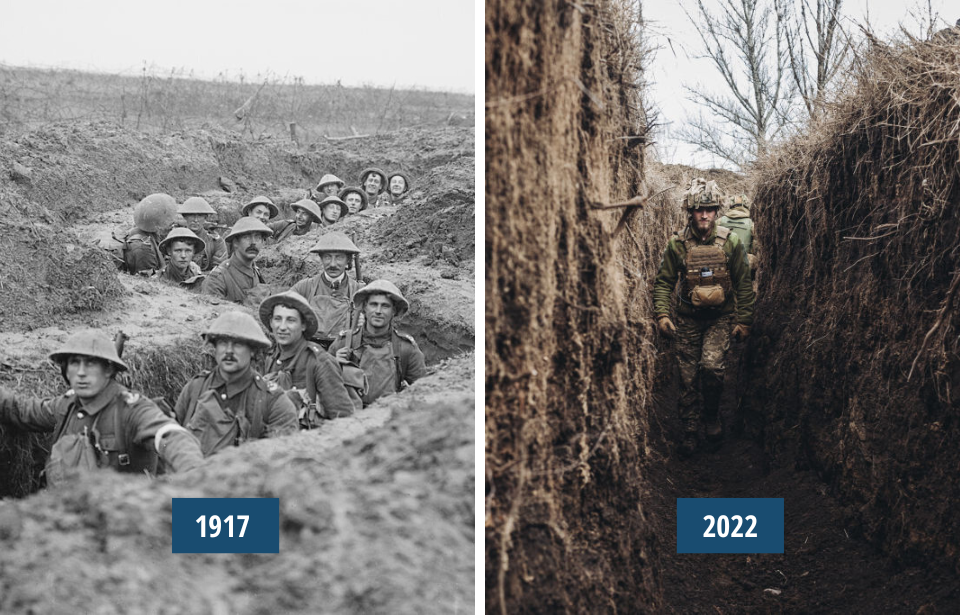Modern warfare has provided armies with an endless arsenal of high-tech weaponry, vehicles and aircraft. However, at their core, most conflicts today are similar to those that occurred over 100 years ago. The ongoing war in Ukraine has left countless dead, displaced thousands and left entire cities in ruin, with the latest tactic to be employed on the frontlines being trench warfare.
Dubbed the “meat grinder,” some experts have likened the conditions in Bakhmut, a city near Ukraine’s eastern border, to those experienced during World War I.
Origins of trench warfare
The use of trenches in battle dates back to the 17th century as a tactic employed by French military engineer Sébastien Le Prestre de Vauban. Trenches were also used throughout the American Civil War and other major conflicts during the 19th century. The most notable war to be fought in trenches was WWI. Fighting along the Western Front was primarily done in the trenches, where millions of soldiers not only fought, but lived and died in.
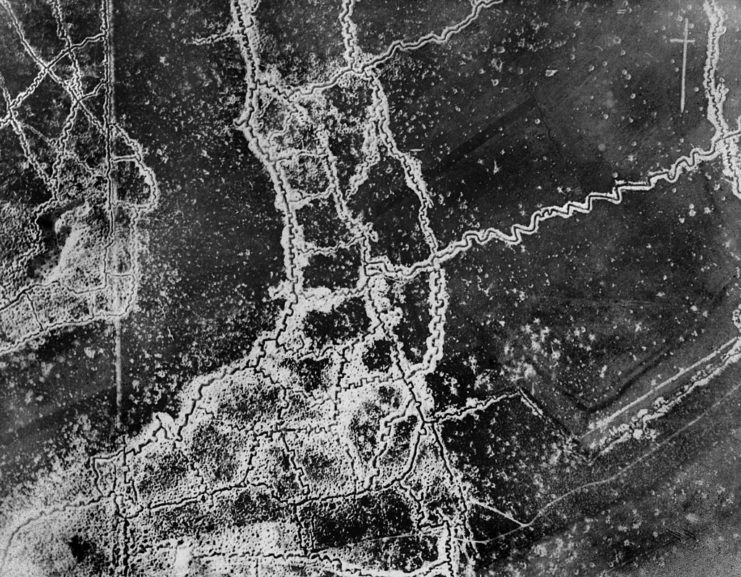
The trenches used during the war spanned 475 miles and were dug eight feet deep under the cover of darkness. The typical system consisted of between two and four zig-zagged lines at least a mile long, which were connected by smaller communication trenches that stored everything from ammunition and food to mail.
Machine gun emplacements and cannons dotted the front of trenches to protect against enemy attacks. Between the warring factions stretched the desolate No Man’s Land, which was populated with barbed wire and large craters created by artillery shells.
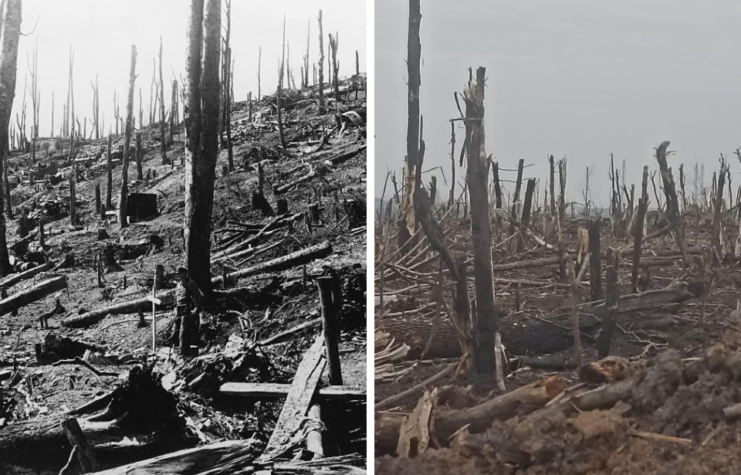
Life in the trenches was horrific. Soldiers were forced to live, eat and sleep in the mud, where lice and vermin ran rampant. The systems also flooded easily, contributing to health issues like trench foot and dysentery, while the constant boom of enemy fire left men sleep-deprived.
Conflicts that followed WWI typically stayed clear of using the trench system, but as Russia and Ukraine continue their fight for Bakhmut, the gruesome reality of trench warfare has returned to the battlefield.
‘There is almost no life left’
The fighting in Bakhmut is a smaller part of the Battle of Donbas, an ongoing offensive that began in April 2022. Bakhmut is a relatively small area, but conquering the territory would be a significant symbolic win for Russia. Both sides have experienced terrifying conditions and an overwhelming loss of soldiers since fighting intensified in August 2022.
In a recent briefing, Ukrainian President Volodymyr Zelenskyy spoke about the dire situation in Bakhmut, saying, “Everything is completely destroyed. There is almost no life left. The whole land near Soledar is covered with corpses of the occupiers and scars from the strikes.”
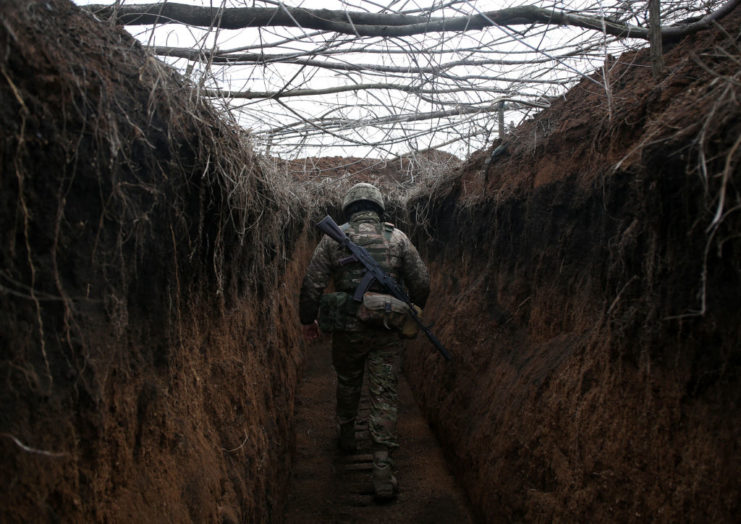
The city has been the “main offensive effort” for Moscow, despite its “limited operational value,” according to Britain’s Ministry of Defence, with experts calling the battle “disproportionately costly” for such a small, insignificant area. Russian troops are also being aided by mercenaries from the Wagner Group.
US Senator Angus King tried to put the conflict into perspective for Americans, explaining, “It’s as if our East Coast, from Maine to Florida and then west to Houston, Texas, was being occupied by a foreign power.”
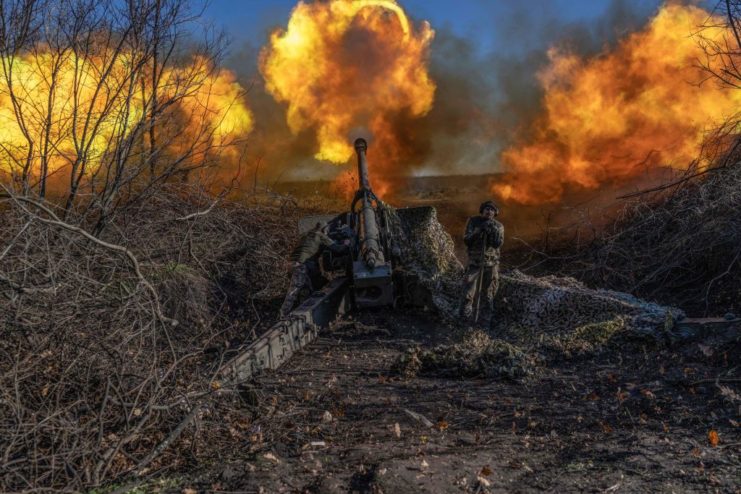
Ukrainian military analyst Oleh Zhdanov also spoke about the conditions on the frontlines in a YouTube video, saying, “So many remain on the battlefield … either dead or wounded. They attack our positions in waves, but the wounded as a rule die where they lie, either from exposure as it is very old or from blood loss.”
Soldiers on the frontlines have repeatedly stated small groups of Russians attack in waves, eventually retreating and leaving white flags for the next group of troops to follow. Images of the No Man’s Land that lies between the Ukrainian and Russian lines are eerily similar to those captured during WWI. Confined to the trenches, neither side has been able to advance since November 2022.
Zelenskyy has also described the ongoing battle, using rhetoric similar to that dating back to the First World War. “This is the beginning of a war against Europe,” he warned. “Against European structures, against democracy, against basic human rights, against a global order of law, rules and peaceful coexistence.”
Is history repeating itself in Ukraine?
The very landscape of the fighting in Bakhmut and the Donetsk region – described as the “epicenter” of the conflict – is a visceral reminder of WWI. In the middle of winter, soldiers stand in muddy trenches, peering into No Man’s Land, which is dotted with broken trees and even more mud. Both Russia and Ukraine are reporting losses of at least 100 soldiers a day, and correspondents on the frontlines have described a battlefield littered with deceased Russian troops.
On the other hand, Russia’s Ministry of Defence claims to have taken out 100 Ukrainian soldiers, one tank, five armored combat vehicles and five other motorized vehicles. The Kremlin has also alleged that its forces are on the brink of “encircling” Bakhmut. The Ukrainian Defence Ministry, however, denies these claims, calling them “fake propaganda” and saying Russian losses in the region are “colossal.”
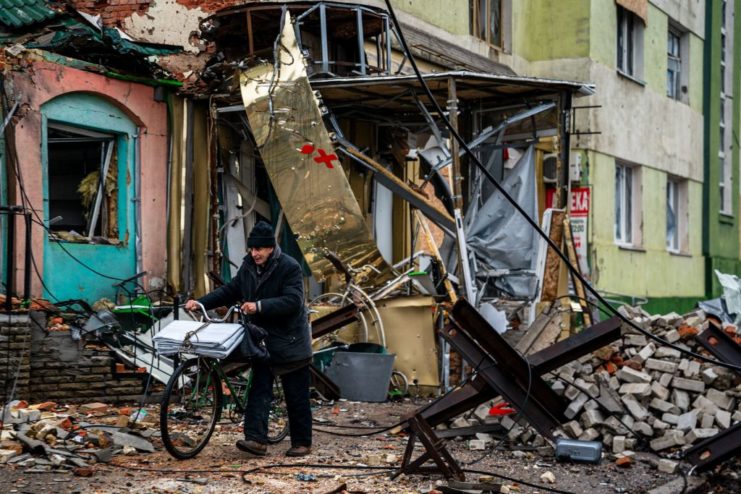
Some experts are comparing the offensive in Bakhmut to the Battle of Verdun, which took place between France and Germany over a period of 10 months. Since Russia began escalating its attacks in August, the fighting in Bakhmut could take several more months, at the cost of more lives.
According to The Guardian, Ukraine is reporting hundreds of dead or wounded in Bakhmut every day. Civilians who are unable to flee have also faced overwhelming difficulties. Heavy fighting and explosions have left the city in ruins, and residents are forced to shelter in flooded basements and “catastrophic conditions without power or heating.”
More from us: Germany to Send Patriot Missiles, Armored Personnel Carriers to Ukraine
One 75-year-old resident reminisced about the city before the war. “Dear God, our town used to be so beautiful,” she said. “There were roses everywhere, flowers.” Now, all that remains are crumbling buildings still filled with belongings of Bakhmut’s 70,000 residents.
